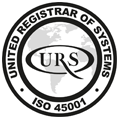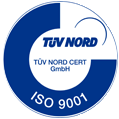In 2022, invenio’s Mechanical Engineering Department gained 3D scanning capability thanks to the acquisition of the FARO SCANARM HD precision scanning head, which is an extension of the FARO EDGE 3D arm. Therefore, in the following article we will explain to our readers what kind of device a 3D scanner is and what the scanning process consists in.
Nowadays, due to the high pace of production and the focus on ensuring high quality, it is necessary to obtain a lot of information about the product at each stage of production. One of the most important pieces of information concerns the geometry of the product. Some products with a complex geometric shape (e.g. computer mice, car body parts) cannot be measured with conventional measurement methods or the number of measurable parameters is too small to determine whether a particular item meets the minimum quality requirements or not. Such situations have led to a dynamic development of optical measuring machines, commonly referred to as 3D scanners.
A 3D scanner is a non-contact measuring device used to capture information about the geometry of even the most geometrically complex physical objects. The result of this process is the conversion of the real object into a precise digital model and, on this basis, the creation of a 3D model that can then be used for quality assessment or reverse engineering or rapid prototyping. The FARO SCANARM HD is a laser scanner that uses blue laser light. Its accuracy is ±25µm and the number of measurement points captured is 560000 points/second.
The general operating principle of this 3D scanner is realised by the distortion effect of the Moire pattern. The scanner emits a laser beam that is directed at the object to be scanned. The surface of the object is illuminated by a raster of lines of known density that are distorted according to the geometry of the measured object. The cameras of the scanner capture the pixel information that results at the border of the grey value shift between the line raster and the scanned surface. The coordinates obtained in this way are recorded as a digital point cloud, from which the scanner software creates a 3D model of the scanned object.
3D scanners are widely used in the automotive, aerospace, defence, energy, heavy machinery, agriculture, shipbuilding, consumer goods or medical industries. They are mainly used for product quality control, dimensioning and comparison with a nominal CAD model. However, the most interesting application of a 3D scanner is in reverse engineering, for example when we need to produce a spare part for which we have no technical documentation.
Another interesting application is rapid prototyping, e.g. when we need to modify an existing object (a machine) by attaching a new part. To do it properly, it is necessary to obtain a 3D model of the modified object and its immediate surroundings (based on a 3D scan). Thanks to this information and the use of CAD systems, the designer can very easily adapt the new part to the modified object in a short time, without collisions, thus minimising the cost of the whole operation. We would not be able to achieve any of the above with classical measurement methods.
Examples of how to use the capabilities of 3D scanners:
- for reverse engineering and quality control,
- for castings, forgings, moulds, tools, sand and wax cores,
- for moulded parts, dies, parts made of plastic, carbon fibre and composite materials,
- for stamped parts, press tools, sheet metal and welded parts,
- for automotive parts, body parts, car bodies, interiors and complete cars,
- for motorbikes, bicycles, motorbike and bicycle frames,
- for semi-trailers, trailers, agricultural machinery and tools,
- for steel structures, welded structures,
- for turbines, hubs, shafts, rotors and blades,
- for gauges and measuring devices,
- for the results of 3D printing, turning, milling and CNC machining,
- for monuments, antiques, sculptures.
In summary, thanks to the reasonable ratio of measuring time to the amount of data acquired while maintaining high measuring accuracy, the 3D scanner is a very versatile measuring instrument that provides much more information about the quality of the manufactured product than contact methods. In addition, it offers far-reaching possibilities in the field of reverse engineering and rapid prototyping, which considerably expand the potential of invenio’s Mechanical Engineering Department.





